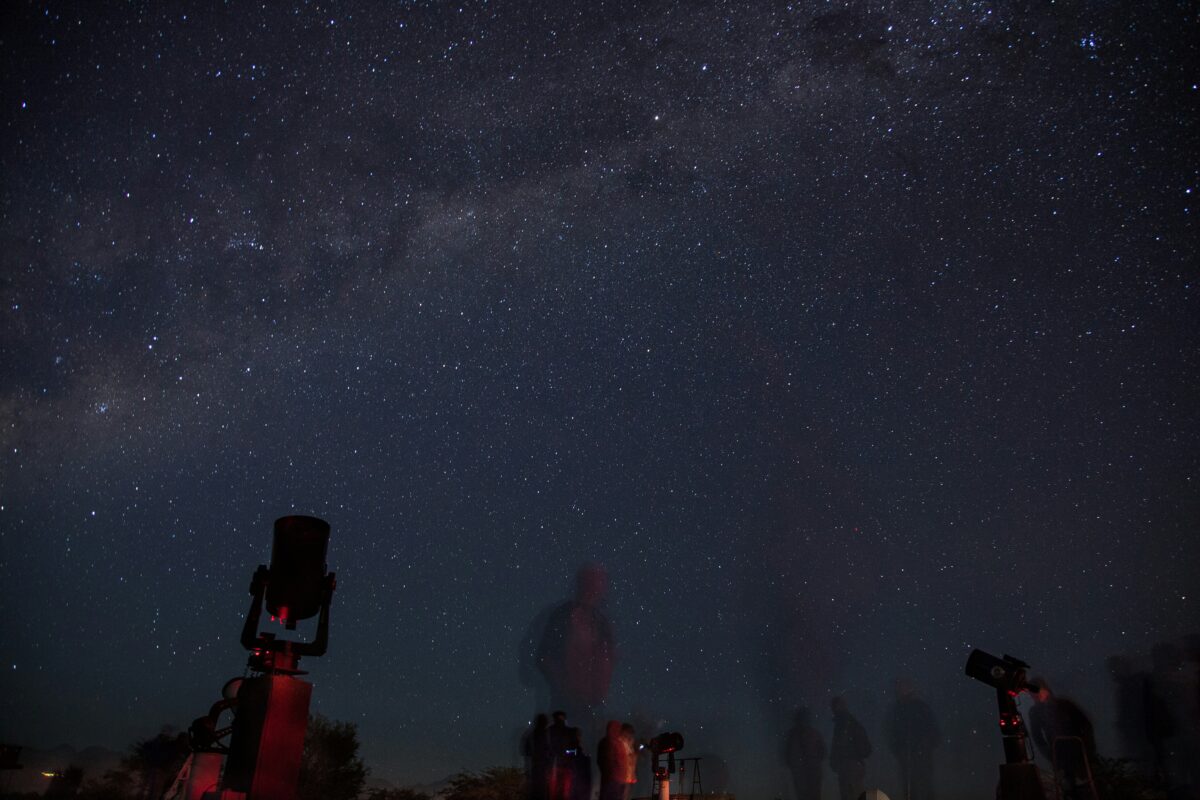Climate change affects far more than what humans can see on the surface of the earth. It also reduces the ability of astronomers to see space from earth and see earth from space, as many observatories are at risk of being caught in climate-induced natural disasters. While astronomers have contributed to climate change in the past, they now have opportunities to become part of the solution.
Increased temperatures lead to increased turbulence, which causes observatories to capture blurred images of space. One of the most productive telescopes in the world is the Very Large Telescope, which is located in the Paranal Observatory in Chile. It is able to operate at both visible and infrared wavelengths, and is made of four individual telescopes, which can be used both separately and together to achieve a higher resolution. At the Paranal Observatory, surface temperatures increased by more than 1.5 degrees Celsius in the past thirty years. When sunset temperatures are higher than 16 degrees Celsius, as they have occasionally been recently, the telescope cannot operate at all. The temperature difference between the outside and inside of the observatory causes turbulence within the dome in a process called dome seeing. Dome seeing can degrade image quality, causing images to appear blurred. Warmer temperatures will also increase humidity, which can lead to greater cloud cover and impact radio wavelength observations, serving as another difficulty for seeing space in the future.
Climate change is also altering outside views of Earth. As of 2007, NASA had seventeen climate-focused space missions, including the satellites Grace, Terra, and Aqua. Grace has seen incredible changes in the Earth’s ice sheets in this amount of time, and Terra and Aqua have observed global measurements of aerosols in the atmosphere for the first time, including greenhouse gas emissions. Overall, global warming is becoming more evident from space, where it is possible to see its dire effects on the planet as a whole.
Increasing climate-induced wildfires and hurricanes also threaten to destroy observatories. In August 2020, flames from wildfires crept close enough to the Lick Observatory in California that telescopes ended up with ash on their mirrors. According to some models, the temperature could rise another four degrees Celsius before the end of the century. In addition, the observatory is located in the Atacama Desert, the driest location on Earth after Antarctica, but The Atacama desert sits below a subtropical jet stream, disturbing dry conditions that it needs for peak performance. According to a recent Nature article, there may even be severe flooding events in the area soon. These types of extreme weather events may become more common in California as El Niño-related events increase.
Unfortunately, astronomers themselves are playing a role in emitting carbon. Leo Burtscher, an astronomer at Leiden University in the Netherlands, stated that astronomers are currently “part of the problem, not the solution.” Astronomy research increases carbon emissions due to supercomputer usage, transportation to global conferences, and more. A Nature Astronomy paper found that Australian astronomers produced an average of thirty-seven tons of CO2 per year. In 2018, German astronomers used eighteen tons of carbon dioxide for each component of their research alone, which is almost twice as much as the average person uses in total per year.
Mitigating climate change can start with the researchers themselves. Astronomers are now trying to avoid traditional computers and use ones that have more efficient graphical processor units. Languages such as Fortran and C++ are more carbon efficient than Python. In addition, they are looking for renewable energy sources to power observatories. The La Silla Observatory in Chile and Murchison Radio-astronomy Observatory in Australia are both now powered by solar power arrays. They are taking advantage of Iceland’s cold climate and geothermal energy sources to set up geothermally powered supercomputers that don’t need to be cooled as much. It is advised for telescopes in the future to be built to better withstand warming climates, but there is only so much that can be done. Also, an increased focus on online conferences is now prevalent in the field, especially due to the pandemic.
Global warming is proven to be a threat to our daily lives, and it may even affect our ability to understand what is beyond us, isolating us further. If we ever want to understand what is beyond Earth in the future, the time to act is now.
Sources:
Cantalloube, F., Milli, J., Böhm, C. et al. The impact of climate change on astronomical observations. Nat Astron 4, 826–829 (2020). https://doi.org/10.1038/s41550-020-1203-3
Cassella, C. (2020, September 20). Our View of Space Is Becoming Blurrier as Our Planet Heats Up, Astronomers Warn. Retrieved from https://www.sciencealert.com/climate-change-is-even-interfering-with-astronomical-observation
Clery, Daniel (2020, October 07). ‘We’re part of the problem.’ Astronomers confront their role in-and vulnerability to-climate change. Retrieved from https://www.sciencemag.org/news/2020/10/we-re-part-problem-astronomers-confront-their-role-and-vulnerability-climate-change
Gohd, C. (2020, September 11). Astronomy and the climate crisis: Scientists make some connections. Retrieved from https://www.space.com/astronomy-climate-change-connections-study-mpia.html
Taking a Global Perspective on Earth’s Climate. (2020, February 04). Retrieved from https://climate.nasa.gov/nasa_science/history/

